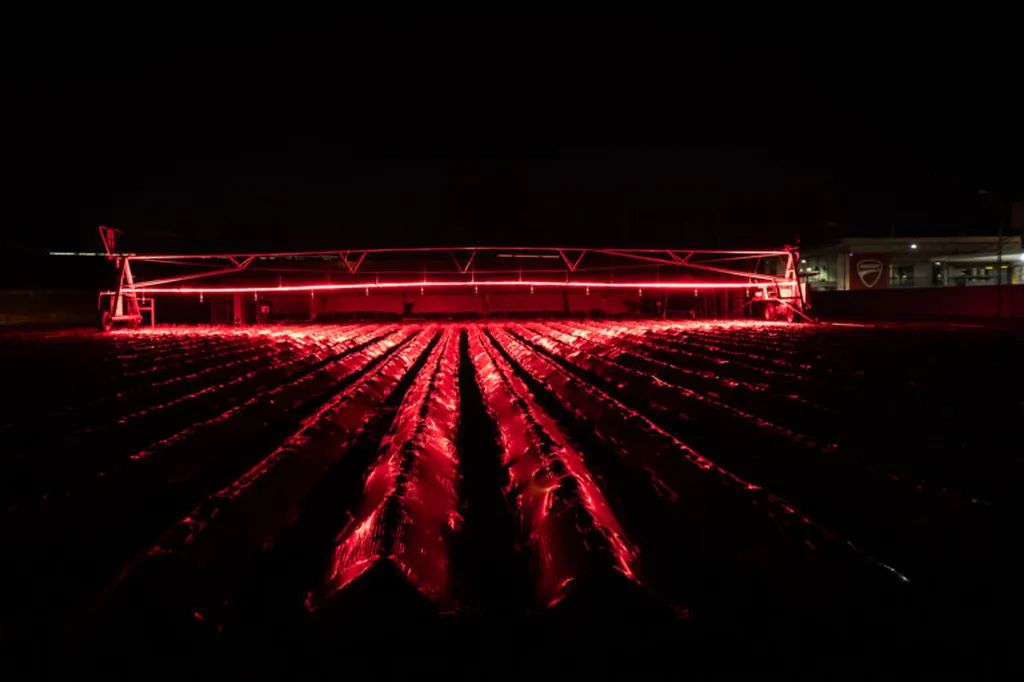In the ever-evolving world of agritech, a recent study published in *Plant Stress* has shed new light on the intricate dance between light, hormones, and plant defense mechanisms. The research, led by András Kukri from the University of Szeged, Hungary, explores how nocturnal red light can modulate ethylene production and downstream transcriptional networks that control plant defense responses at dawn. The findings could have significant implications for crop disease resistance and sustainable agriculture.
The study focused on mature tomato plants, both wild-type and ethylene-insensitive Never ripe (Nr) mutants. The researchers exposed the plants to red light at night for a week and observed intriguing changes. While leaf biomass and area remained largely unaffected, structural traits like leaf thickness and internode length showed notable alterations, particularly in the wild-type plants.
Transcriptomic analyses revealed significant differences in gene expression between the wild-type and Nr plants. Genes related to photosynthesis, growth regulation, and the circadian clock were particularly affected. “Red light not only influences ethylene-regulated processes but also seems to activate defense pathways independently of ethylene,” Kukri explained. This dual action could be a game-changer for crop protection strategies.
One of the most promising findings was the increased resistance to Botrytis cinerea infection in Nr mutants exposed to red light. This suggests that red light can enhance biotic stress resistance without relying solely on ethylene signaling. The study also found that red light increased the levels of defense-related phytohormones like salicylic acid and abscisic acid, as well as the activity of antioxidant enzymes.
For the agriculture sector, these findings open up new avenues for environmentally friendly crop protection. By leveraging specific light spectra, farmers could potentially boost their crops’ natural defenses against pathogens, reducing the need for chemical pesticides. “This research highlights the potential of red light as a tool for improving crop disease resistance,” Kukri noted. “It’s a step towards more sustainable and efficient agricultural practices.”
The study’s implications extend beyond tomatoes. Understanding how light and ethylene interact to regulate plant defense responses could lead to broader applications in various crops. As the agritech industry continues to innovate, integrating these findings into commercial practices could revolutionize how we approach crop protection and sustainability.
In the quest for more resilient and productive crops, this research offers a beacon of hope. By harnessing the power of light and hormones, we can pave the way for a greener and more secure future in agriculture. The study was published in *Plant Stress* and led by András Kukri from the Department of Plant Biology at the University of Szeged, Hungary.

